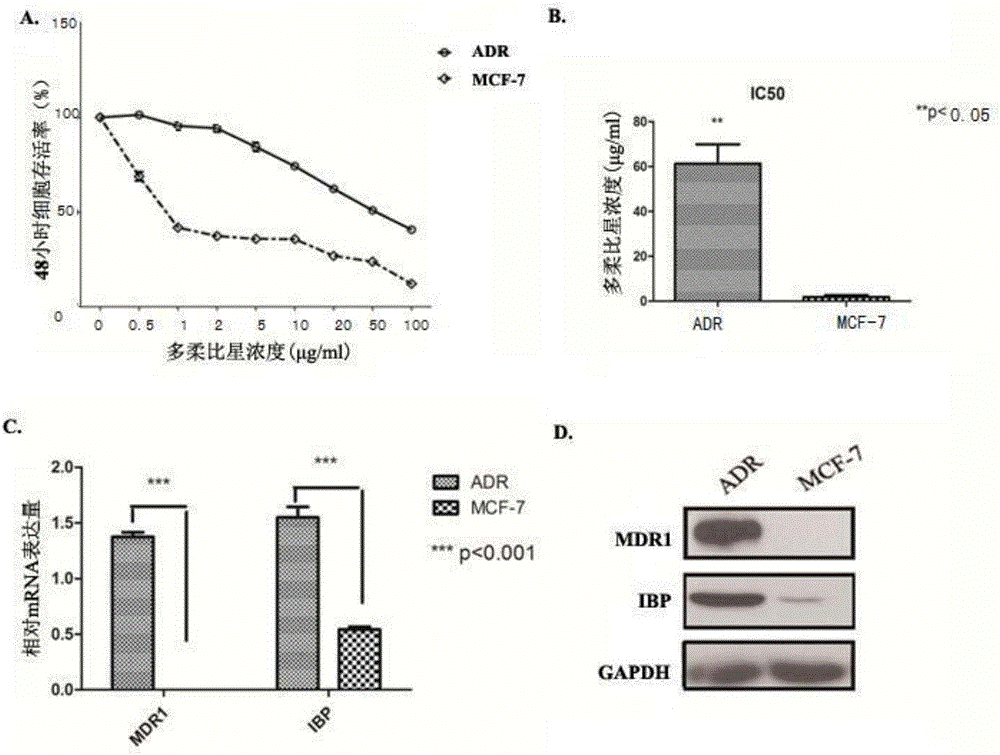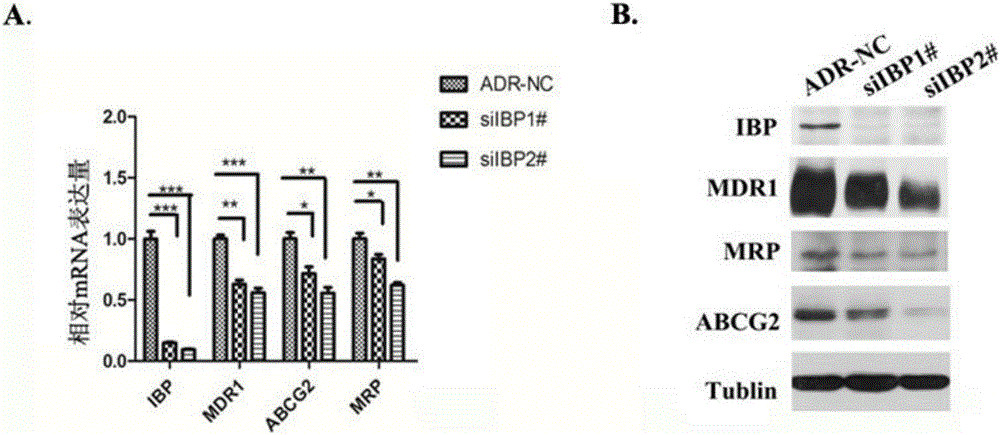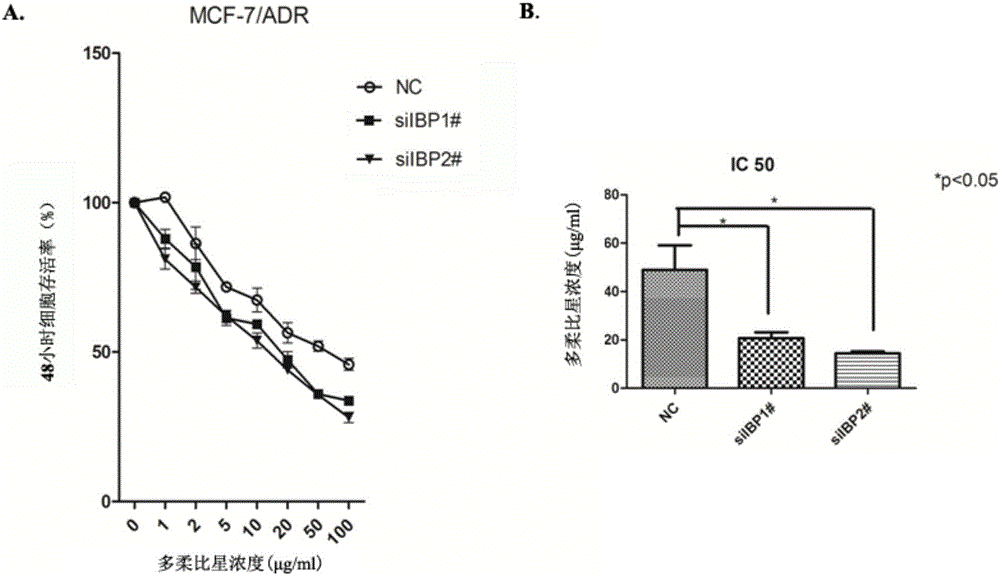Application of breast cancer multidrug resistant protein molecule IBP
A multi-drug resistance, breast cancer technology, applied in the field of biochemistry, can solve problems such as unsatisfactory effects, and achieve the effects of reducing expression, improving sensitivity, and reducing drug efflux capacity
- Summary
- Abstract
- Description
- Claims
- Application Information
AI Technical Summary
Problems solved by technology
Method used
Image
Examples
Embodiment 1
[0024] Embodiment 1, induction of breast cancer drug-resistant cell line MCF-7 / ADR and cultivation of breast cancer cell line
[0025] MCF-7, MDR-MB-231, and SK-BR-3 breast cancer cell lines were purchased from ATCC cell bank in the United States and frozen in our laboratory. MCF-7 cells were cultured in 1640 medium containing 10% (v / v) fetal calf serum, and multidrug-resistant MCF-7 / ADR cells were cultured by MCF-7 parental cells continuously exposed to gradient concentrations of doxorubicin Induced in the base, wherein the concentration of doxorubicin was gradually increased from 5ng / ml to 1000ng / ml. For long-term culture of MCF-7 / ADR, 1640 medium containing 1000ng / ml doxorubicin and 10% fetal bovine serum was used at 37°C with 5% (v / v) CO 2 nourish. MDR-MB-231 and SK-BR-3 cells were cultured in DMEM medium containing 10% (v / v) fetal bovine serum.
[0026] The constructed multidrug-resistant MCF-7 / ADR cells were treated with different concentrations of doxorubicin, and th...
Embodiment 2
[0033] Example 2, Construction of MCF-7 / ADR, MDA-MB-231, SK-BR-3 stable cell lines of lentivirus-mediated IBPshRNA interference
[0034] Through bioinformatics analysis, for IRF4 binding protein (IBP) gene (Genbank: NM_022047), its amino acid sequence is shown in SEQ ID NO.11, then design RNA interference sequence according to 2 targets of IBP gene, target sequence and The interference sequences are shown in Table 2. Anneal the synthesized oligo into a double-stranded oligo sequence, and connect it into the linearized RNA interference vector LV10 to obtain the LV10 vector containing the target sequence. Correct transformants were verified by sequencing, and high-purity plasmid extraction was carried out. Then the constructed LV10 vector containing the target sequence was co-transfected into 293T cells with shuttle plasmids and packaging plasmids (pGag / Pol, pRev, pVSV-G), the cell culture supernatant was collected, the virus was concentrated by ultracentrifugation, and stored ...
Embodiment 3
[0043] Embodiment 3, construct the MCF-7 stable transfection cell line of IBP overexpression
[0044] Total RNA was extracted from human lymphocytes and reverse transcribed into cDNA. Using human lymphocyte cDNA as a template, PCR technology was used to amplify the full-length cDNA fragment of human IBP. The full-length cDNA fragment of human IBP was cloned into the eukaryotic expression vector pEGFP-C1. After sequencing and identification, the pEGFP fusion expression plasmid pEGFP-C1-IBP was successfully constructed. 1 μg of pEGFP-C1 and pEGFP-C1-IBP plasmids were respectively transfected into MCF-7 cells in a 24-well plate to obtain IBP-overexpressing MCF-7 cells. Lipofectamine2000 kit was used for transfection; the cells were digested 24 hours after transfection, and then the cell suspension was diluted at a volume ratio of 1:24 and then inoculated in a new 24-well plate, and the cell culture conditions were as described above MCF-7 cell culture conditions; add 1000 μg / ml...
PUM
 Login to View More
Login to View More Abstract
Description
Claims
Application Information
 Login to View More
Login to View More - R&D
- Intellectual Property
- Life Sciences
- Materials
- Tech Scout
- Unparalleled Data Quality
- Higher Quality Content
- 60% Fewer Hallucinations
Browse by: Latest US Patents, China's latest patents, Technical Efficacy Thesaurus, Application Domain, Technology Topic, Popular Technical Reports.
© 2025 PatSnap. All rights reserved.Legal|Privacy policy|Modern Slavery Act Transparency Statement|Sitemap|About US| Contact US: help@patsnap.com



